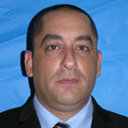Cerebral sinodural thrombosis following minor head injury in children.
Mots clés
Abstrait
Cerebral sinodural thrombosis (CSDT) is a rare complication of minor head trauma in children. Despite recommendations, anticoagulation is frequently withheld. We aimed to evaluate the etiology, clinical presentation, risk factors, diagnosis, treatment, and outcome of pediatric CSDT following minor head trauma, and specifically to evaluate factors associated with anticoagulation use following minor head trauma in pediatric patients with CSDT. A literature search from 1990 to 2012 identified manuscripts discussing epidemiology, risk factors, clinical presentation, management, and outcome in pediatric patients with CSDT subsequent to minor head trauma. One pediatric patient diagnosed with CSDT following minor head trauma in our institution was also included in the study. There were 18 pediatric patients with CSDT following minor trauma, including the current patient. Mean patient age was 7.8years (range 23months-15years). There was a strong female predominance (2.4:1). Vomiting and headache were the most common symptoms. Five patients had pre-existing risk factors (gastroenteritis, protein S deficiency, estroprogestenic medication, elevated antiphospholipid antibodies, malnutrition). Anticoagulation was administered to six patients with additional risk factors, severe symptoms, or deterioration. There was no mortality, 12 patients recovered fully, and four patients improved with residual symptoms. One patient required lumboperitoneal shunt placement. Pediatric CSDT is a rare complication of minor head trauma, with variable presentation. Anticoagulation has generally been reserved for patients suffering from severe symptoms, for those who deteriorate neurologically during observation, and for those who suffer from a concomitant prothrombotic disorder.


